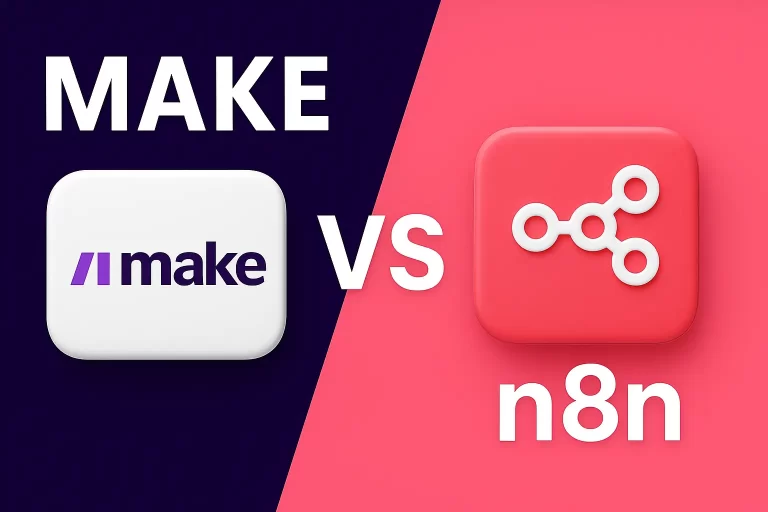In today's fast-paced business landscape, implementing Zapier automation setups can be crucial for organizations seeking efficiency and cost-effectiveness. As the demands of managing various tasks increase, the need for automation has never been more pronounced. By leveraging Zapier’s capabilities, companies can significantly reduce manual intervention, streamline processes, and ultimately save valuable time and resources. In this article, we’ll explore the importance of automation in business, provide an overview of Zapier, and dive into twelve essential Zapier automation setups that can help businesses thrive.
The Importance of Automation in Business
Automation offers myriad benefits that can directly impact the bottom line of a business. One of the standout advantages is the sheer amount of time saved through the elimination of repetitive tasks. When employees are relieved of mundane duties, they can focus on higher-value activities, encouraging creativity and problem-solving. This shift can lead to improved employee satisfaction, as team members can engage in more meaningful work rather than constantly performing rote actions.
Moreover, reducing manual tasks can contribute significantly to cost savings. According to studies, businesses employing automation can see productivity increase by over 40%, which translates to fewer resources dedicated to administrative tasks. This efficiency not only optimizes labor costs but also allows for better resource allocation, enabling companies to invest in areas like R&D or customer service.
Overview of Zapier
Zapier is a powerful automation tool that allows users to connect hundreds of applications, making it easier to transfer data and automate workflows without needing to write complex code. Users can create “Zaps,” which are automated workflows that link apps and enable specific actions to occur in response to certain triggers. For example, a new lead in a CRM can trigger an email notification and a task in a project management tool simultaneously.
What makes Zapier particularly appealing is its user interface—intuitive and designed for non-technical users. This functionality opens the door for businesses of all sizes to harness the potential of integrations and automation, creating custom workflows tailored to their specific needs.
12 Essential Zapier Automation Setups
1. Lead Management Automation
Lead management can be a cumbersome process, but automating lead capture and follow-ups significantly eases the burden. By integrating lead generation forms with email marketing tools, businesses can automatically add new leads to mailing lists and send personalized follow-up emails. This setup not only ensures quick communication but also captures leads accurately without manual data entry.
2. Email Marketing Integration
With the multitude of email tools available, integrating different platforms can be a game changer. By connecting tools like Mailchimp or ConvertKit with CRM systems, businesses can ensure their customer communication remains consistent and timely. This integration allows for automated campaigns, follow-ups, and customer segmentation, optimizing marketing efforts across channels.
3. Social Media Posting Schedule
Maintaining an active presence on social media is essential for businesses today. Automating the scheduling of posts across various platforms keeps content regularly updated and reduces the manual effort required. By utilizing tools such as Buffer or Hootsuite in tandem with Zapier, businesses can automatically share blog posts or promotional content across all their channels.
4. Customer Support Ticketing
Automating customer support processes can greatly improve response times. By creating Zaps that generate support tickets from specific emails or form submissions, businesses can ensure all inquiries are logged and attended to promptly. This setup minimizes the risk of missed messages and enables customer service teams to focus on providing exceptional support.
5. CRM Synchronization
Keeping customer data accurate and up-to-date is vital for informed decision-making. Through Zapier, businesses can synchronize data across multiple platforms in real time. For instance, whenever contact information is updated in one tool, it can automatically reflect in others, ensuring that everyone is working with the most current information.
6. Task Management Workflow
Seamless collaboration between project management tools is crucial for project success. By connecting apps such as Trello, Asana, and Slack, teams can automate the flow of tasks and notifications. Updates in one task management app can trigger actions in another, ensuring all team members remain informed and aligned on project progress.
7. Invoicing and Payment Reminders
Managing invoices and payment reminders can be tedious. Automating these tasks through Zapier can streamline invoicing processes, ensuring timely payments and reducing the chances of human error. By connecting invoicing software with email reminders, businesses can automatically send out invoices and follow-up notifications to clients, improving cash flow.
8. Event Registration and Confirmation
For businesses hosting events, managing registrations manually can be a logistical challenge. With automation setups, event registration forms can feed directly into CRM or email marketing systems, automatically sending confirmation emails and reminders to attendees. This setup reduces manual tasks and enhances the attendee experience by providing timely communication.
9. File Backup Automation
Regular data backups are essential for protecting sensitive information. By automating file backups through Zapier, businesses can ensure crucial files are regularly saved to cloud storage solutions like Google Drive or Dropbox. This strategy protects against data loss and eliminates the need to manually perform backups, allowing team members to focus on their core tasks.
10. Feedback Collection Setup
Gathering customer feedback is crucial for continuous improvement. Automating surveys and feedback collection through tools like Google Forms or SurveyMonkey can streamline this process. Integrating these tools with email automation ensures feedback requests are sent out regularly and responses are collected efficiently, allowing businesses to make data-driven decisions.
11. Subscription Management
For subscription-based services, managing customer communication can be complex. Through Zapier, businesses can automate notifications for billing, renewals, and updates. This setup enhances customer engagement while reducing the workload on support teams, ensuring customers receive consistent communication about their subscriptions.
12. Reporting and Analytics Automation
Data-driven insights are fundamental to understanding business performance. By consolidating data from various sources, Zapier enables businesses to generate comprehensive reports automatically. Connecting analytics tools with spreadsheets or dashboards allows decision-makers to visualize data efficiently and make informed strategic choices.
The Impact of These Automations
The implementation of these Zapier automation setups can lead to significant time and financial savings. Organizations often report that automating routine tasks can save up to 30% of their working hours, translating directly into increased productivity and profitability. Additionally, with fewer resources dedicated to manual processes, companies can reallocate funds to areas that promote growth, innovation, and customer service improvements.
Moreover, automating workflows reduces the likelihood of errors that can incur additional costs. By ensuring tasks are carried out consistently and accurately, businesses can mitigate risks associated with human oversight.
Summary of Zapier’s Benefits
Implementing Zapier automation setups creates a pathway to increased efficiency and cost savings, transforming the way businesses manage their operations. From automating lead management to enhancing customer support, these setups can alleviate the burden of manual tasks, allowing organizations to focus on strategic growth and innovation. As companies look to maximize their potential, integrating automation through Zapier can be a vital step toward achieving optimal operational efficiency. Embracing these tools not only leads to smoother workflows but also ultimately supports a more agile and responsive business model.




